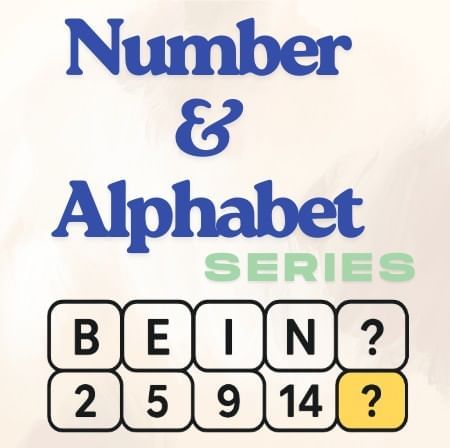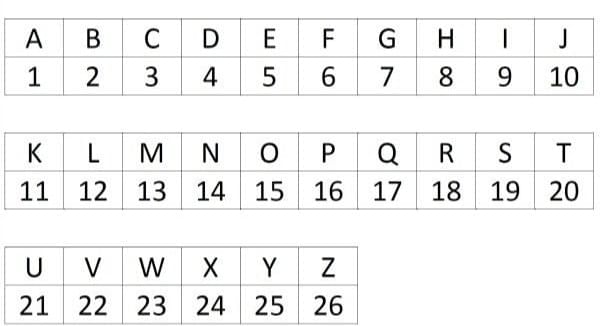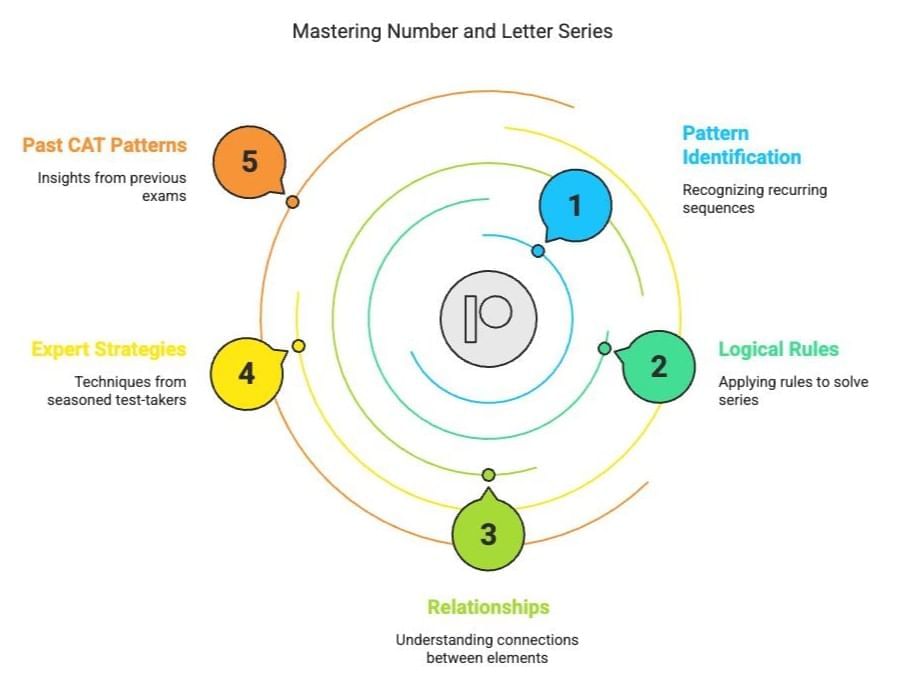5 Golden Rules for Number and Letter Series | Logical Reasoning (LR) and Data Interpretation (DI) - CAT PDF Download
| Table of contents |

|
| Understand the Key Concepts |

|
| Golden Rules for Solving Series Questions |

|
| Step-by-Step Strategy for Tackling Questions |

|
| Common Mistakes to Avoid |

|
Number and Letter Series questions are a staple in the Logical Reasoning and Data Interpretation (LRDI) section of the CAT exam. These questions test your ability to identify patterns, logical rules, and relationships between elements in a sequence. Below are specific, actionable rules derived from expert strategies and past CAT patterns to help you tackle these questions confidently.

Understand the Key Concepts
1. Types of Series
- Number Series: Sequences based on numerical patterns (e.g., arithmetic, geometric, prime numbers).
- Letter Series: Sequences based on alphabetical positions or patterns (e.g., skipping letters, alternating cases).
- Mixed Series: Combine numbers, letters, and symbols (e.g., A1, B2, C3).
2. Common Patterns in Number Series
- Arithmetic Progression (AP): Constant difference (e.g., 2, 5, 8, 11 → +3).
- Geometric Progression (GP): Constant ratio (e.g., 3, 6, 12, 24 → ×2).
- Prime Numbers: Sequence of primes (e.g., 2, 3, 5, 7, 11).
- Squares/Cubes: Perfect squares (1, 4, 9, 16) or cubes (1, 8, 27, 64).
- Alternating Patterns: Two interleaved sequences (e.g., 1, 2, 4, 4, 7, 8 → +3, ×2).
- Factorial-Based: Involves factorials (e.g., 1, 2, 6, 24 → 1!, 2!, 3!, 4!).
- Fibonacci: Each term is the sum of the previous two (e.g., 1, 1, 2, 3, 5).
- Combination Rules: Multiple operations (e.g., ×2 +1, ×3 –1).
3. Common Patterns in Letter Series
- Alphabetical Order: Forward (A, B, C) or reverse (Z, Y, X).
- Skip Patterns: Skipping fixed letters (e.g., A, C, E, G → +2).
- Positional Values : Using A=1, B=2, etc. (e.g., B(2), D(4), G(7) → +2, +3).
- Vowel/Consonant Focus: Alternating vowels and consonants (e.g., A, B, E, D, I).
- Mirror Images: Letters mirrored around the centre of the alphabet (e.g., A ↔ Z, B ↔ Y).
- Case Patterns: Alternating uppercase/lowercase (e.g., A, b, C, d).
Golden Rules for Solving Series Questions
Golden Rule 1: Identify the Pattern Type First
CAT series questions often mix patterns (e.g., alternating operations). Quick classification saves time.
Number Series: Check for:
Common difference (e.g., 2, 5, 8, 11 → +3).
Common ratio (e.g., 3, 6, 12, 24 → ×2).
Prime numbers, squares/cubes (e.g., 2, 3, 5, 7 or 1, 4, 9, 16).
Alternating operations (e.g., +2, ×3, +2, ×3).
Letter Series: Convert letters to positions (A=1, B=2) and treat them as numbers.
Golden Rule 2: Decode Hybrid Series with the "Split Method"
Split the hybrid series (mix of numbers/letters) into separate sequences.
Why it matters: CAT often combines number-letter patterns (e.g., A1, B3, C5, D7…).
Example: Solve Z3, W9, T27, Q81…
Letters: Z (26) → W (23) → T (20) → Q (17): Subtract 3.
Numbers: 3 → 9 → 27 → 81: Multiply by 3.
Key: Treat letters and numbers as independent sequences.
Golden Rule 3: Use the "Alternate Term" Strategy
Check if odd/even positions follow different rules.
Why it matters: CAT hides patterns by splitting them across alternate terms.
Example:
Series: 2, 4, 3, 6, 5, 10…
Odd terms (2, 3, 5): Prime numbers.
Even terms (4, 6, 10): Even numbers (4=2×2, 6=3×2, 10=5×2).
EduRev Tip: Write the series in two rows:
- Odd positions: 2, 3, 5...
- Even positions: 4, 6, 10...
Golden Rule 4: Master CAT-Specific Patterns
Master the series that appear frequently in the CAT exam, such as:
Fibonacci Hybrids: 2, 2, 4, 6, 10, 16… (Sum of the previous two terms).
Power Series: 2, 4, 16, 256… (Each term is the square of the previous).
Digit-Sum Patterns: 199, 28, 10, 1… (199 → 1+9+9=19 → 1+9=10 → 1+0=1).
Alphanumeric: A1, B2, D4, G7… (Letters advance by 1, 2, 3…; numbers follow primes).
Golden Rule 5: Master Common Sequences
Memorise:
- Squares up to 25² (625) and cubes up to 10³ (1000).
- Prime numbers up to 100.
- Factorials up to 7! (5040).
Example: If you see 1, 8, 27, 64 → immediately recognise cubes (1³, 2³, 3³, 4³).
Step-by-Step Strategy for Tackling Questions

- Scan the Series: Note if it’s numbers, letters, or mixed.
- Calculate Differences/Ratios: Start with basic checks.
- Check for Known Sequences: Primes, squares, factorials.
- Split Alternating Patterns: Separate into two subsequences.
- Test Options Against the Pattern: Eliminate invalid choices.
- Validate the Rule: Ensure it applies to all terms.
Common Mistakes to Avoid
- Rushing to Conclusions: Don’t assume a pattern after 1–2 terms; verify with all given elements.
- Ignoring Negative Signs: A series like 10, 7, 4, 1 involves subtraction (-3), not addition.
- Overcomplicating Simple Patterns: A sequence like A, D, G, J may just be +3 skips (not a hidden code).
- Misreading Mixed Series: Confusing letters and numbers (e.g., treating "B12" as B=2 and 12 separately).
|
77 videos|180 docs|96 tests
|
FAQs on 5 Golden Rules for Number and Letter Series - Logical Reasoning (LR) and Data Interpretation (DI) - CAT
| 1. What are the golden rules for solving series questions in competitive exams like CAT? |  |
| 2. What are the common mistakes to avoid when solving number and letter series questions? |  |
| 3. How can I effectively tackle series questions in the CAT exam? |  |
| 4. What types of series are commonly tested in the CAT exam? |  |
| 5. How can I improve my skills in solving series questions for the CAT? |  |















